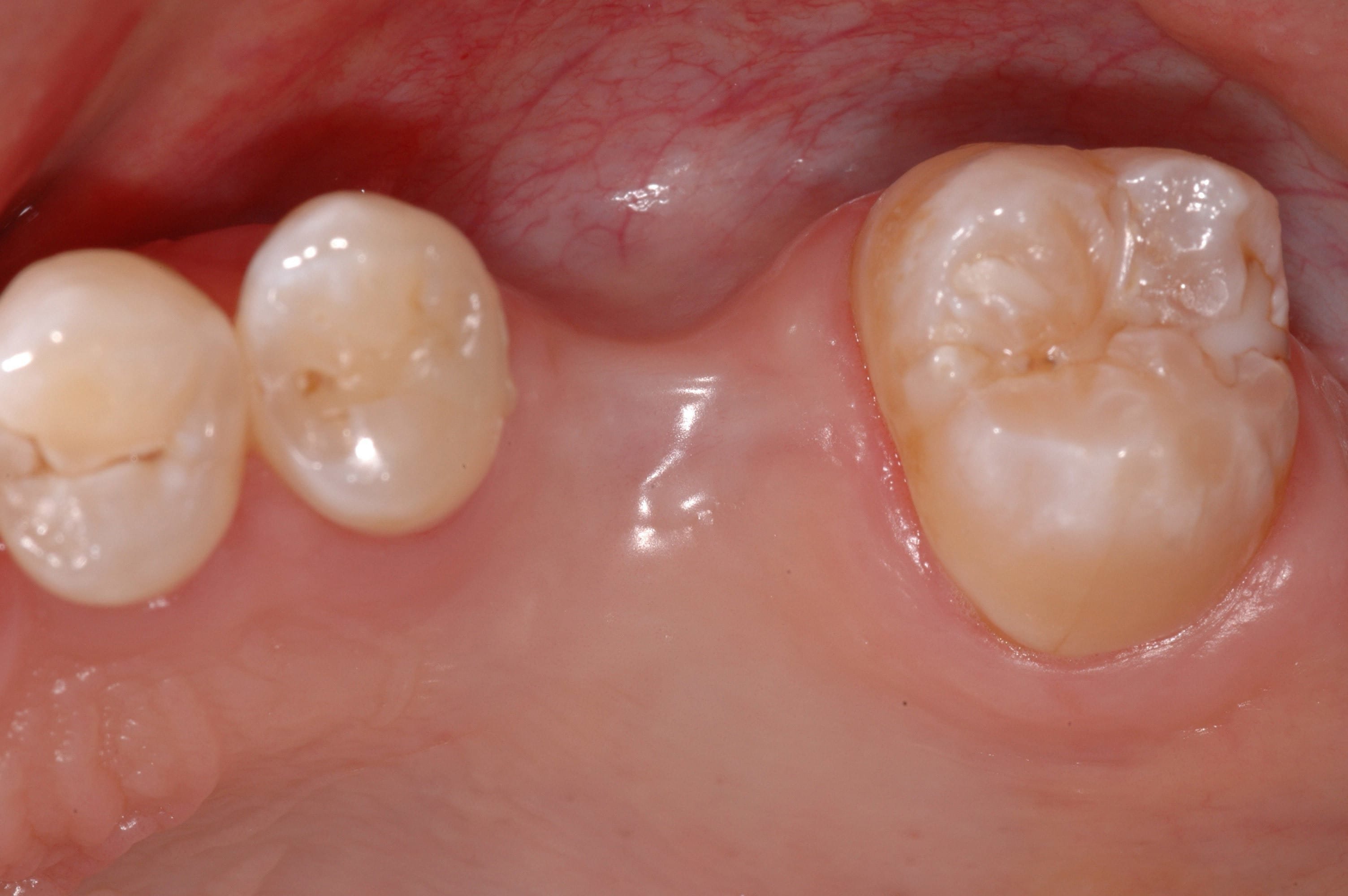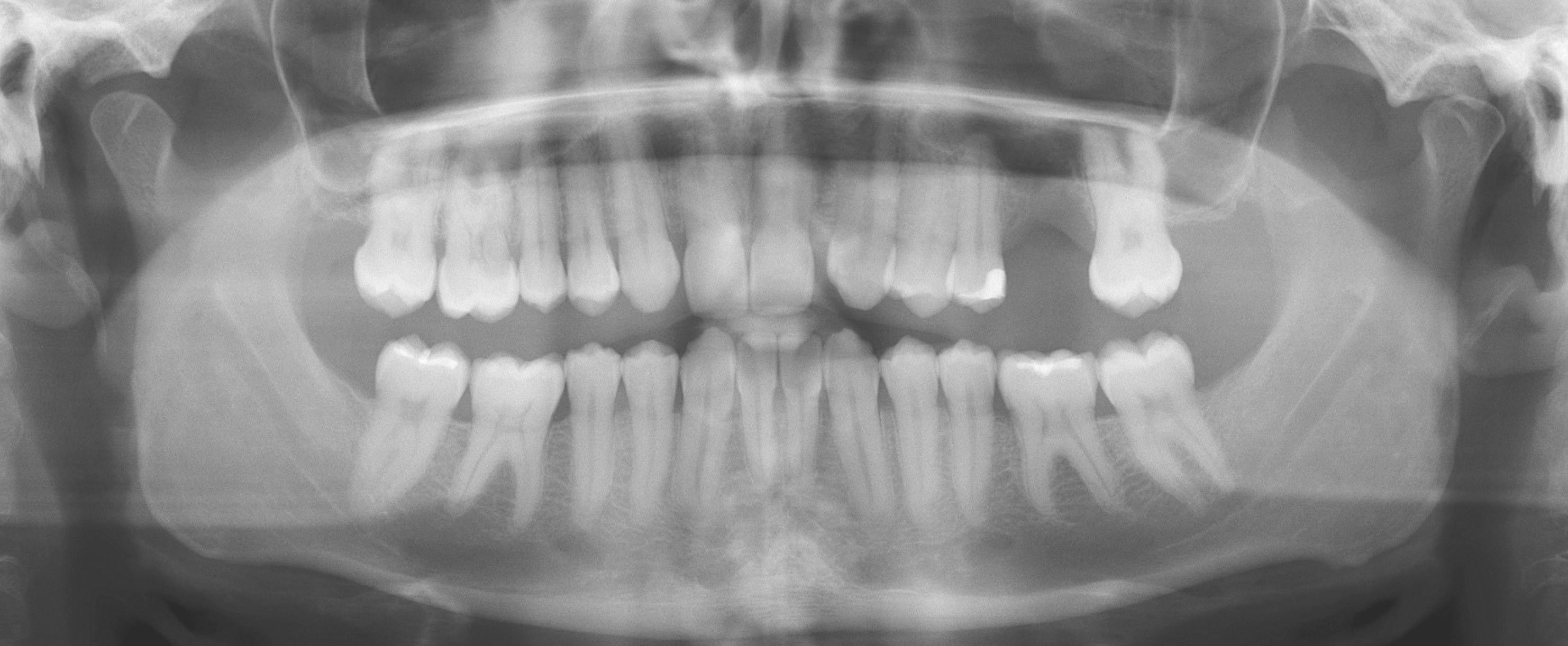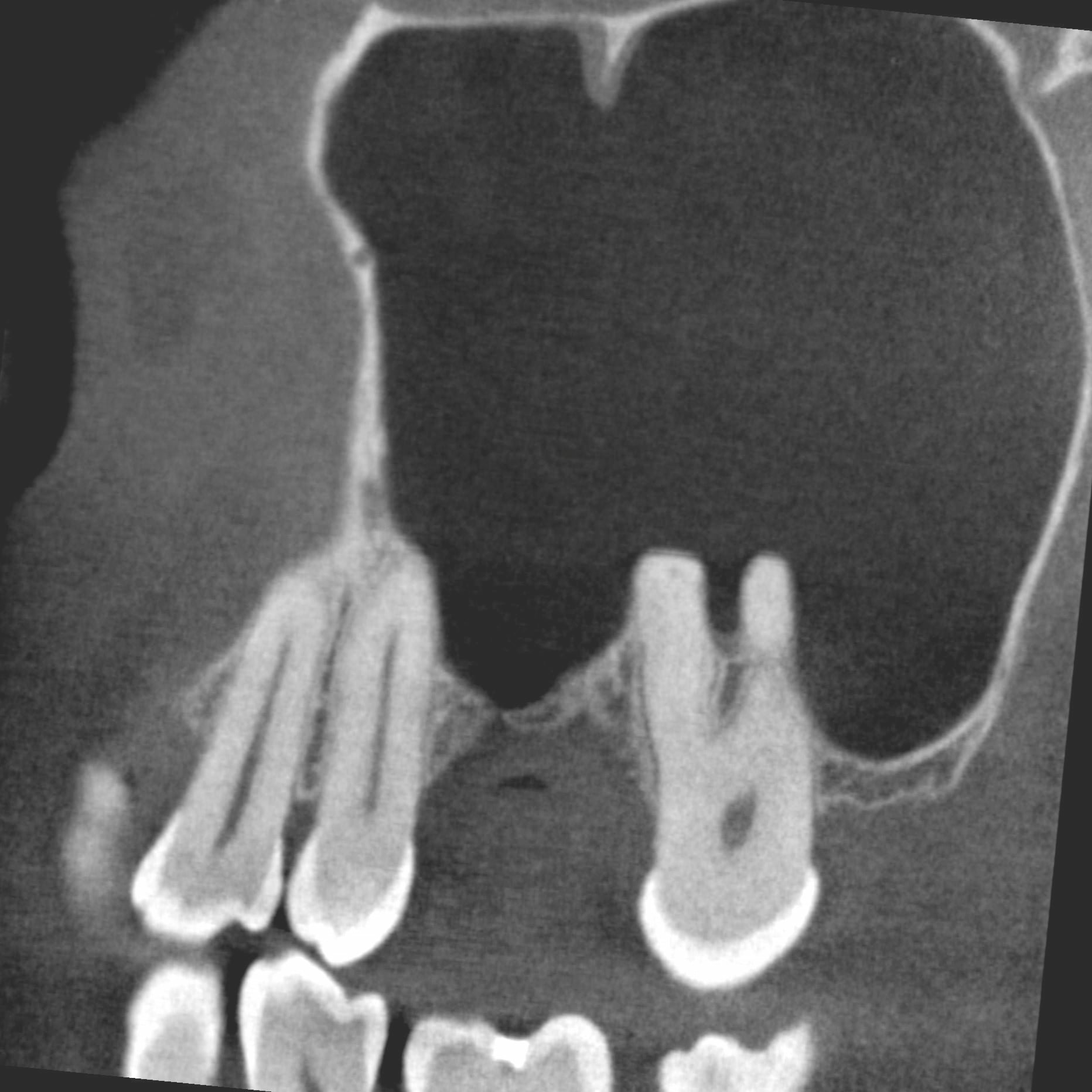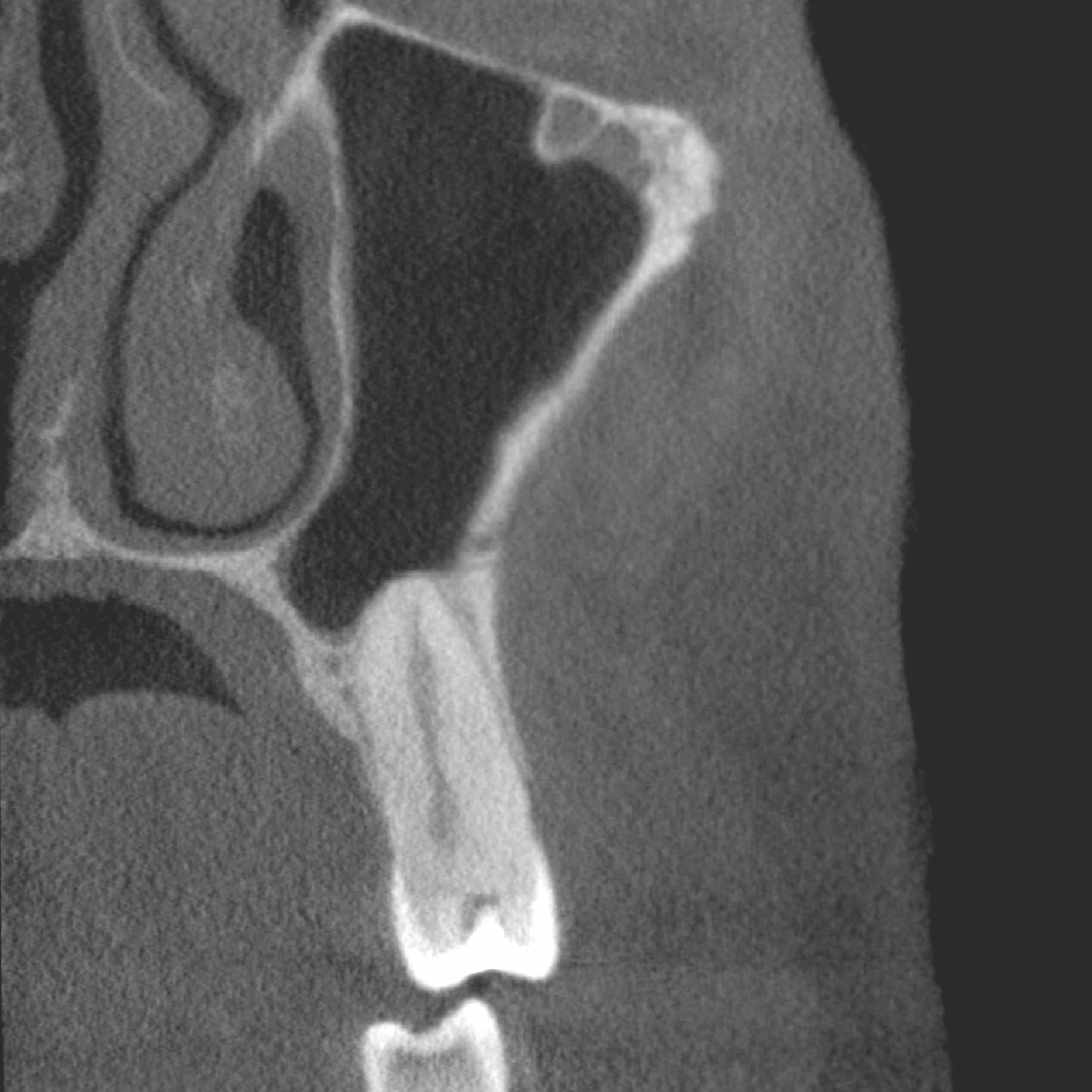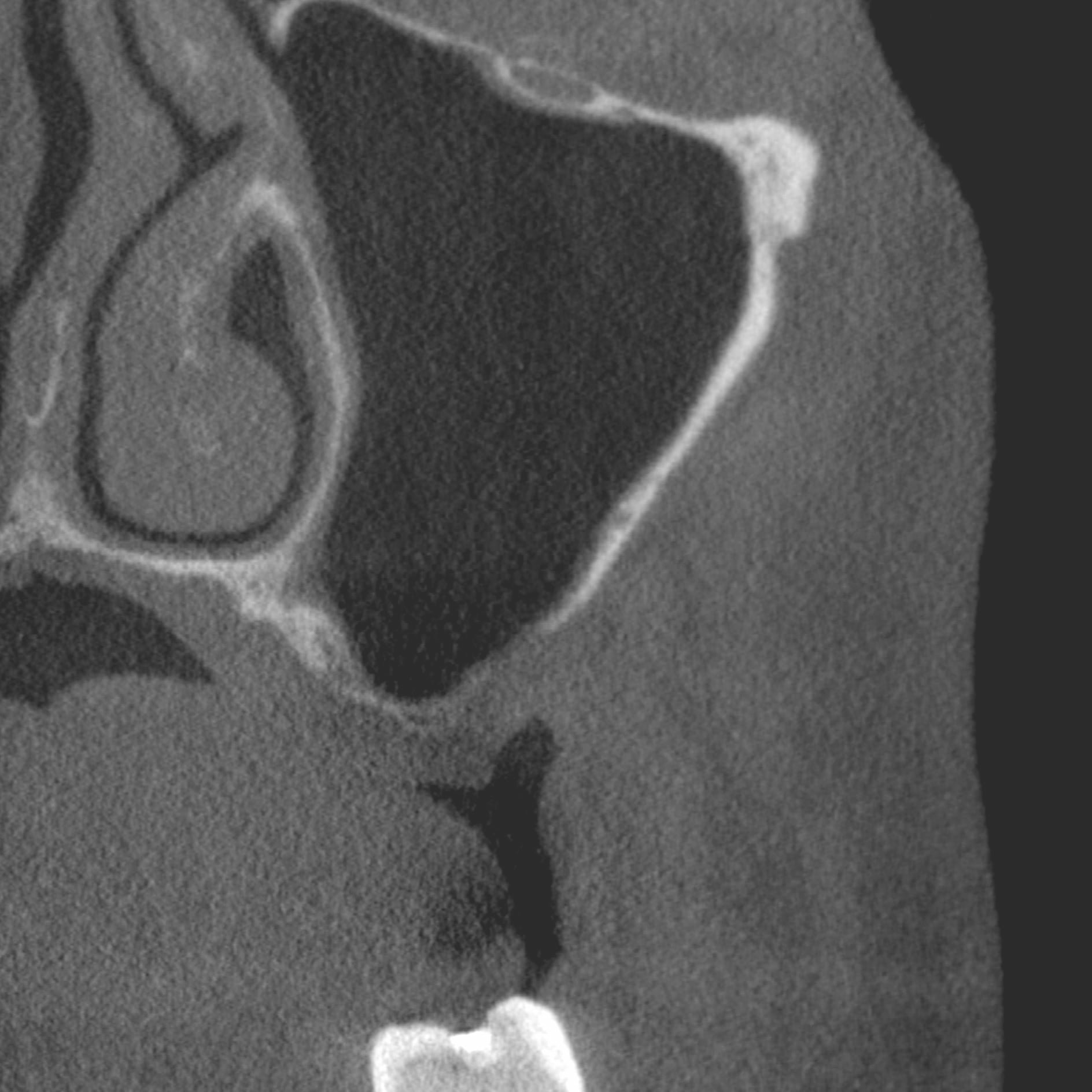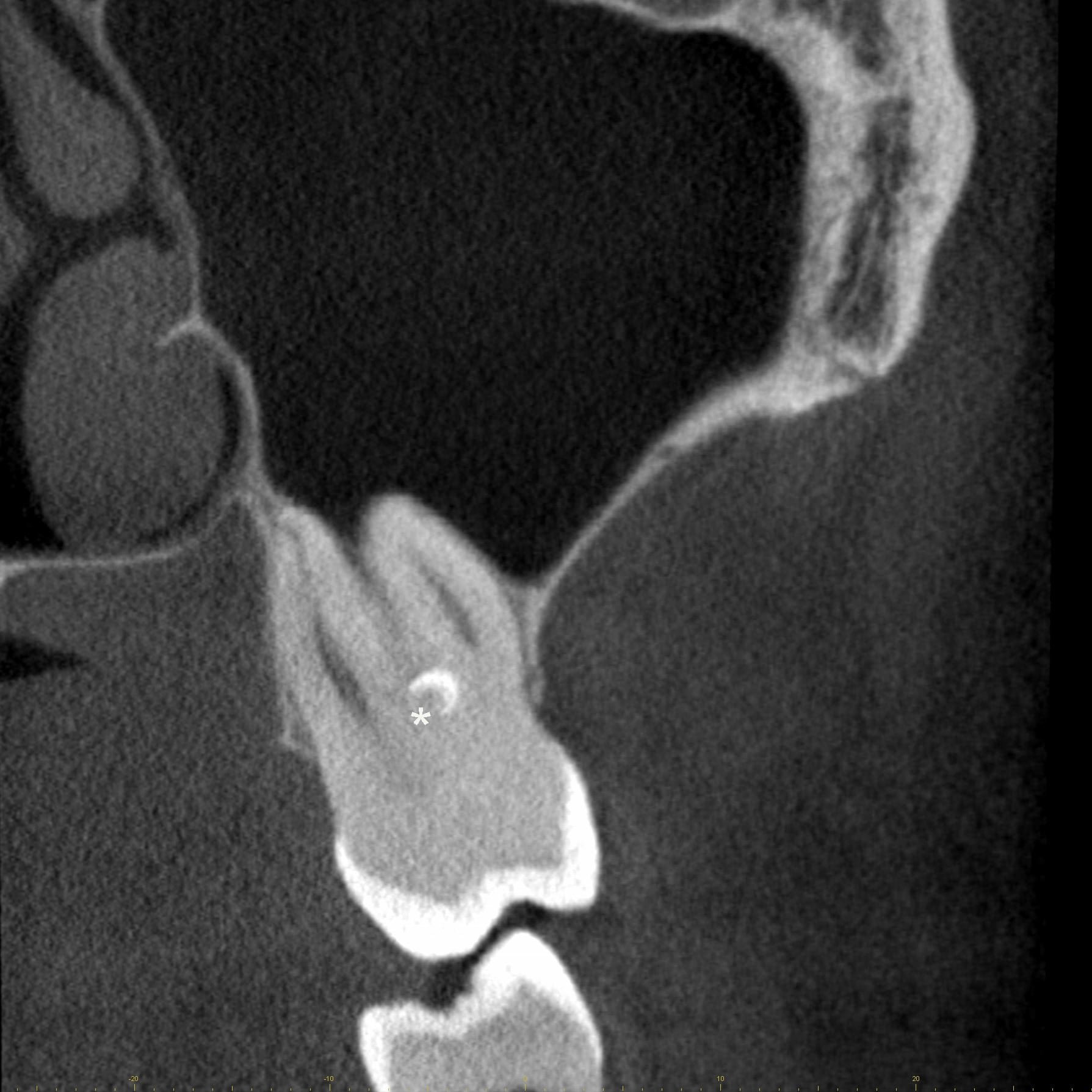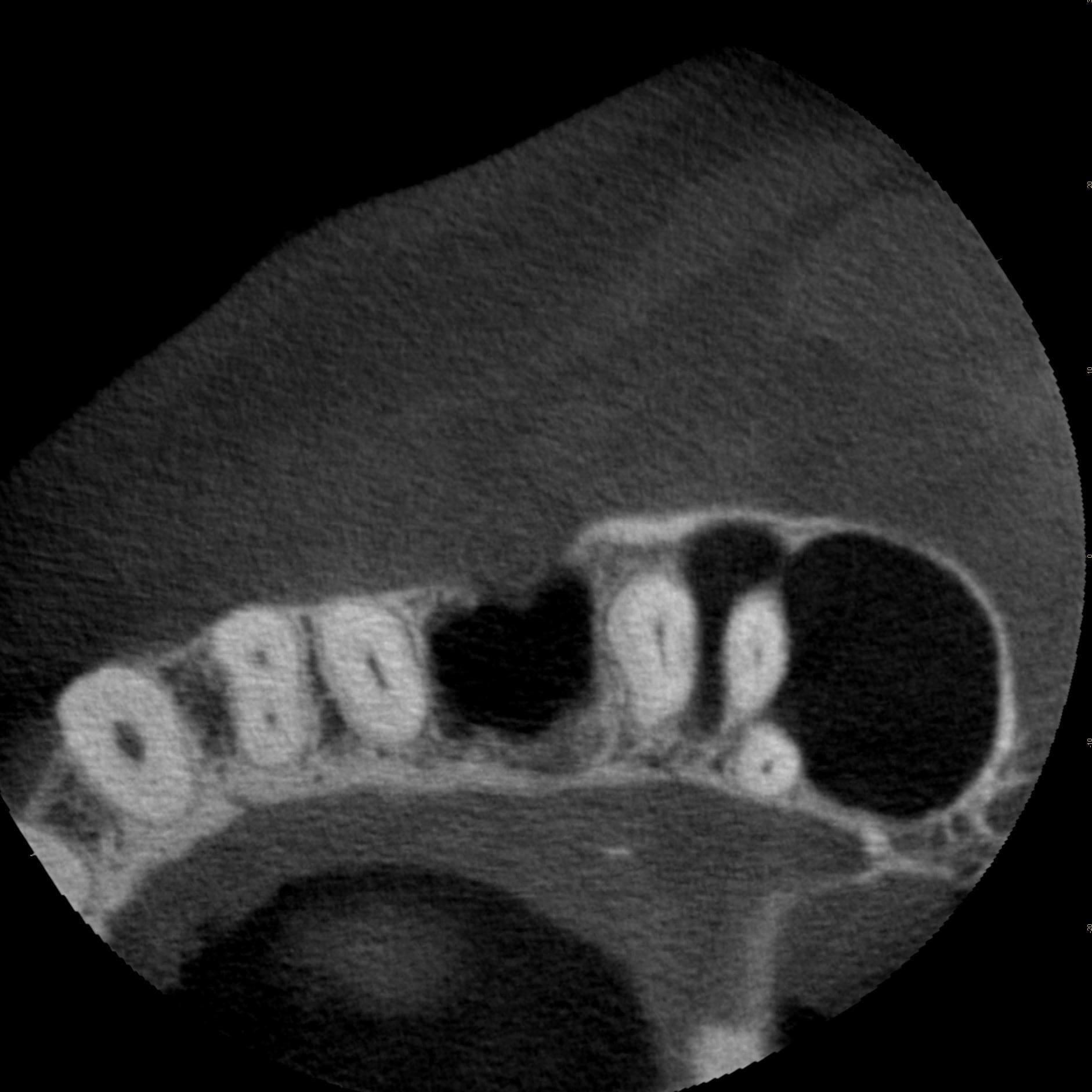Figure 1
Initial clinical presentation of a 41-year old male patient referred for dental implant treatment planning
The patient had an extraction of the first left maxillary molar following a failed root canal treatment one year ago.
Figure 2
Panoramic view of the patient exhibiting the single-tooth gap in the upper left posterior maxilla.
Additional findings include agenesis of both lateral maxillary incisors. Otherwise, there are no pathologic findings in the radiograph.
Figure 3
CBCT analysis of the left posterior maxilla including the missing first molar area (small FOV:6 x 5 cm): the evaluation of the images exhibits well pneumatized maxillary sinus without any pathologic findings, premolars and a second molar without fillings or other signs of decay, and a reduced vertical bone height and even missing bone towards the maxillary sinus in the region of the first molar.

